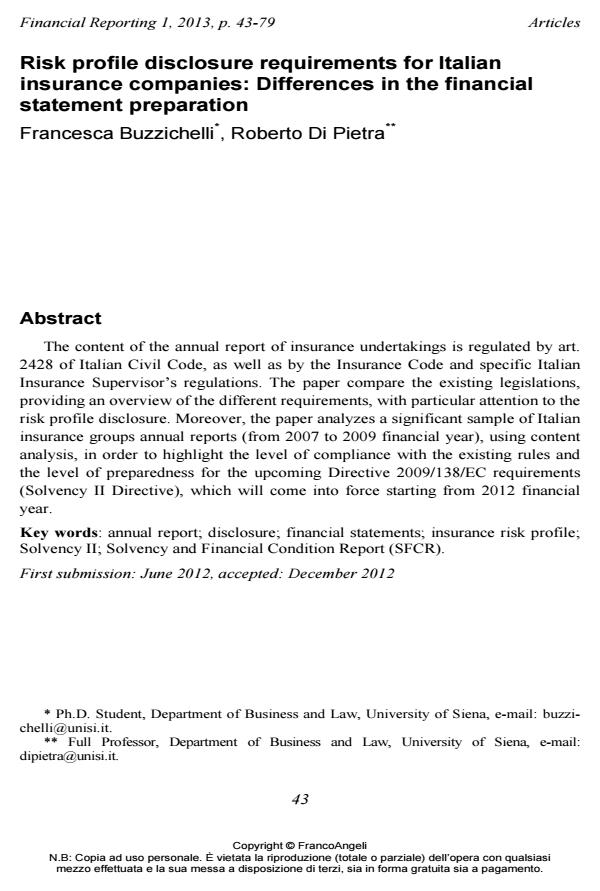Risk profile disclosure requirements for Italian insurance companies: Differences in the financial statement preparation
Journal title FINANCIAL REPORTING
Author/s Francesca Buzzichelli, Roberto Di Pietra
Publishing Year 2013 Issue 2013/1
Language English Pages 37 P. 43-79 File size 811 KB
DOI 10.3280/FR2013-001004
DOI is like a bar code for intellectual property: to have more infomation
click here
Below, you can see the article first page
If you want to buy this article in PDF format, you can do it, following the instructions to buy download credits

FrancoAngeli is member of Publishers International Linking Association, Inc (PILA), a not-for-profit association which run the CrossRef service enabling links to and from online scholarly content.
The content of the annual report of insurance undertakings is regulated by art. 2428 of Italian Civil Code, as well as by the Insurance Code and specific Italian Insurance Supervisor’s regulations. The paper compare the existing legislations, providing an overview of the different requirements, with particular attention to the risk profile disclosure. Moreover, the paper analyzes a significant sample of Italian insurance groups annual reports (from 2007 to 2009 financial year), using content analysis, in order to highlight the level of compliance with the existing rules and the level of preparedness for the upcoming Directive 2009/138/EC requirements (Solvency II Directive), which will come into force starting from 2012 financial year.
Keywords: Annual report; disclosure; financial statements; insurance risk profile; Solvency II; Solvency and Financial Condition Report (SFCR).
- Is risk reporting a possible link between financial and management accounting in private firms? Chiara Crovini, Giovanni Ossola, in FINANCIAL REPORTING 1/2021 pp.29
DOI: 10.3280/FR2021-001002
Francesca Buzzichelli, Roberto Di Pietra, Risk profile disclosure requirements for Italian insurance companies: Differences in the financial statement preparation in "FINANCIAL REPORTING" 1/2013, pp 43-79, DOI: 10.3280/FR2013-001004